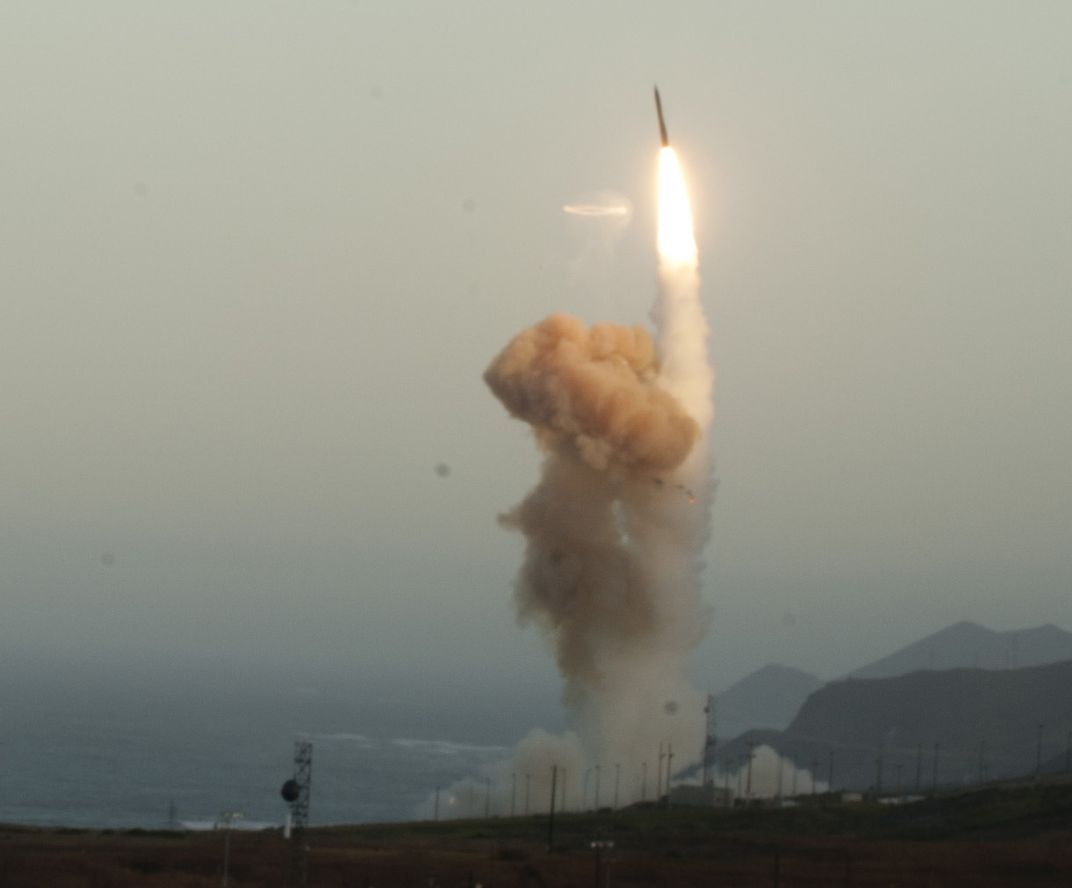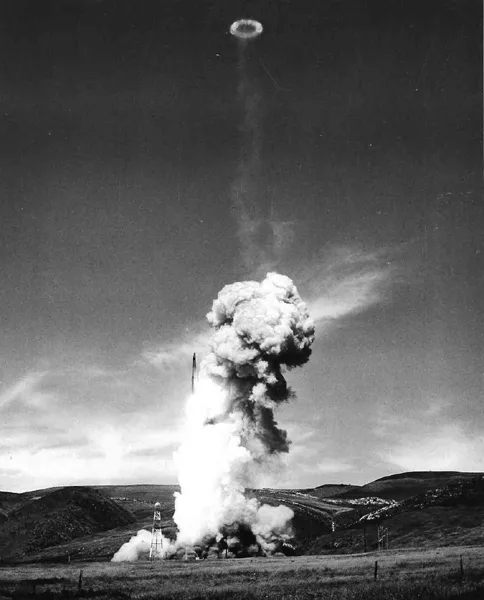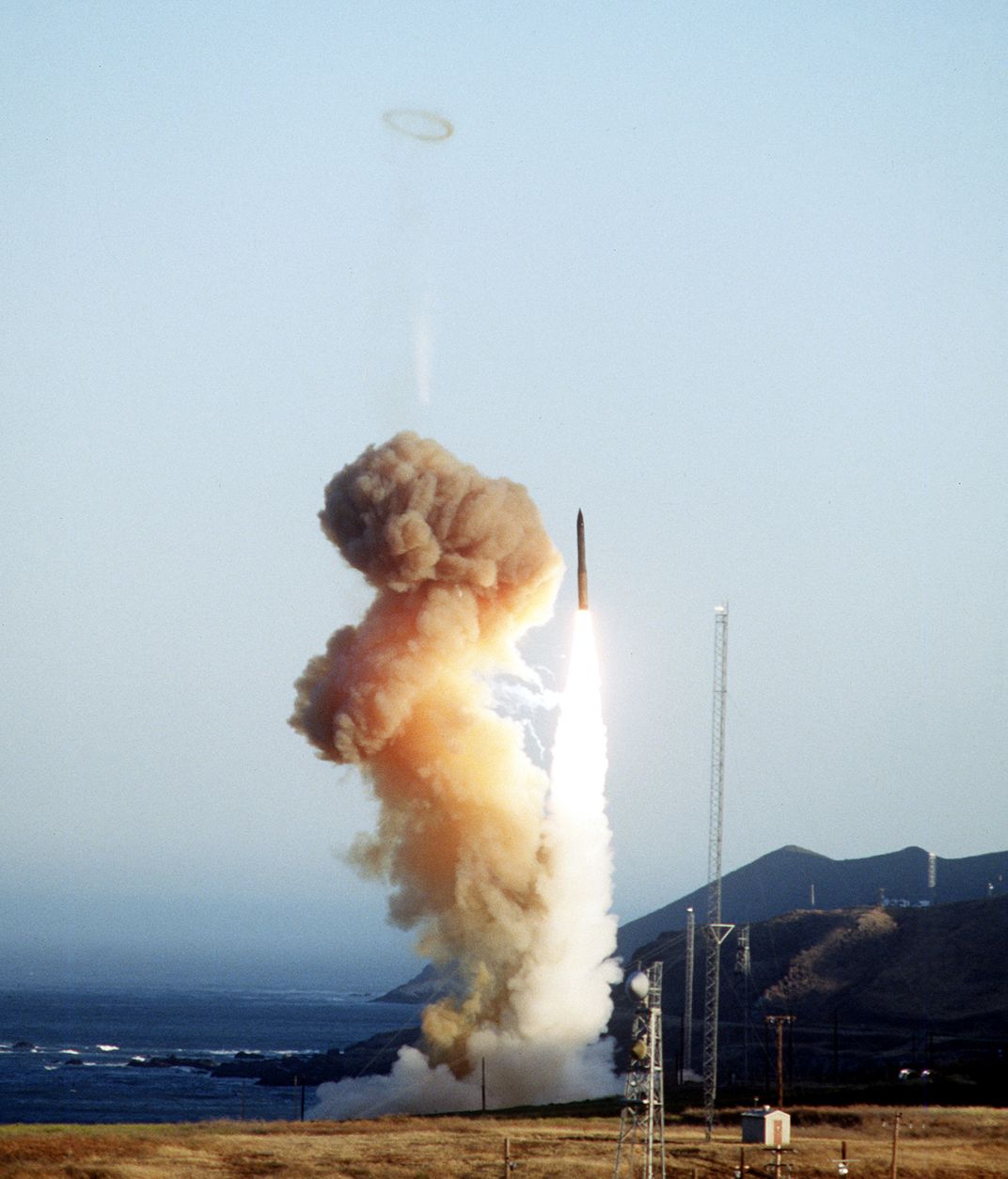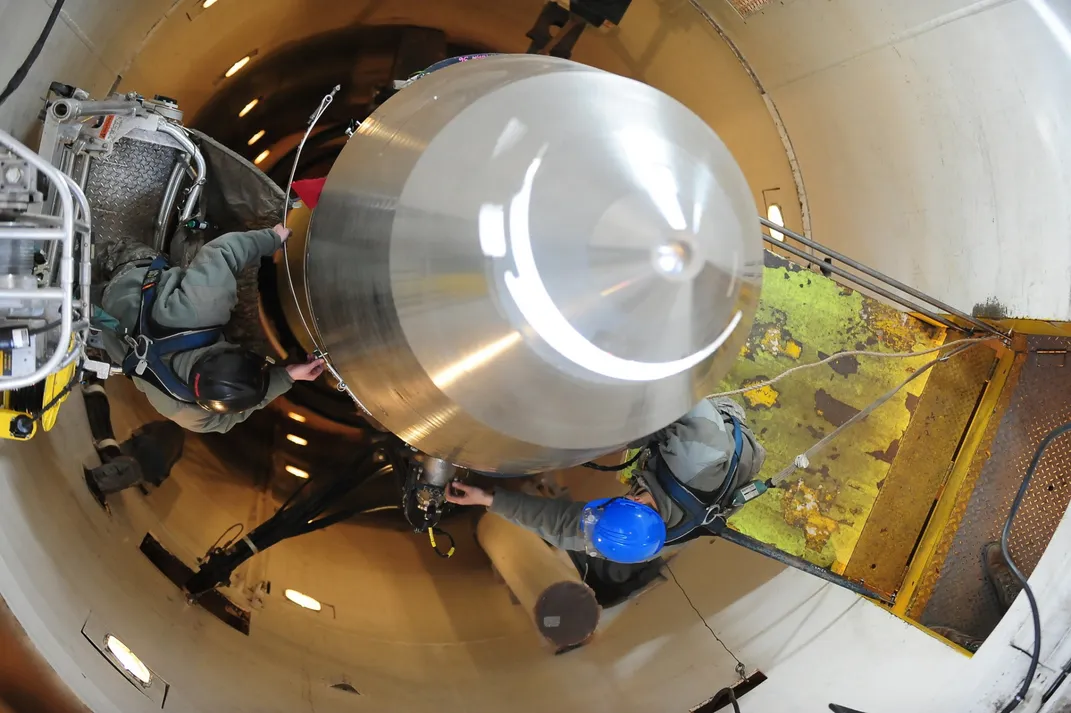Minuteman, the Missile that Blows Smoke Rings
That distinctive puff is 55 years old today.
:focal(1166x611:1167x612)/https://tf-cmsv2-smithsonianmag-media.s3.amazonaws.com/filer/4e/39/4e390735-2349-4308-a7a4-74a0fe25073b/1_1850480.jpg)
As the first Minuteman missile climbed into the sky over Cape Canaveral, Florida, on February 1, 1961, spectators saw a perfect dark ring of smoke form over the launch site. Now in its third generation, the missile’s distinctive smoke ring is still its signature.
Minuteman silos—they used to be called “launch tubes”—are 80 feet deep with a diameter of 12 feet. The air inside is kept at 60 degrees Fahrenheit, with controlled humidity to keep electrical components operating properly. At launch time the missile is ignited underground, and when the silo’s 90-ton concrete blast door opens, the pressurized air inside the silo suddenly meets the surface air, producing smoke. Although the blast door is rectangular, once it retracts on its rails, the top of the silo forms a perfect metal ring. The pressure wave then forces the smoke out through this ring.
“It’s just like someone puffing smoke from a cigar,” explains David Tise, a park ranger at the Minuteman Missile National Historic Site in South Dakota. The ring can rise hundreds of feet, and the missile usually doesn’t climb past its own ring until several seconds into the flight. Sometimes the Minuteman pierces its center like a bull’s-eye, but more often the ring drifts away from the line of flight to linger like a halo.
“Smoke rings can be different shapes and sizes due to wind factors,” says Tise. “Vandenberg AFB [from which the missiles are tested periodically] is right on the Pacific Coast, so it is windy.” Wisps of smoke from Vandenberg launches float downrange like haunted hula hoops.
Within five years of the first Minuteman launch in 1961, more than 1,000 silos had been dug into remote corners of the West, including Wyoming, the Dakotas and Montana. Grouped in clusters of 10, each silo is at least three miles from the next. The historic site operated by the National Park Service was formed from the last remnants of Minuteman IIs dismantled after the strategic arms limitation treaty (START) in 1991. Those 1960s-vintage missiles carried 1.2-megaton warheads (equivalent to one-third the explosive force of all bombs dropped during World War II, including the two atomic bombs).
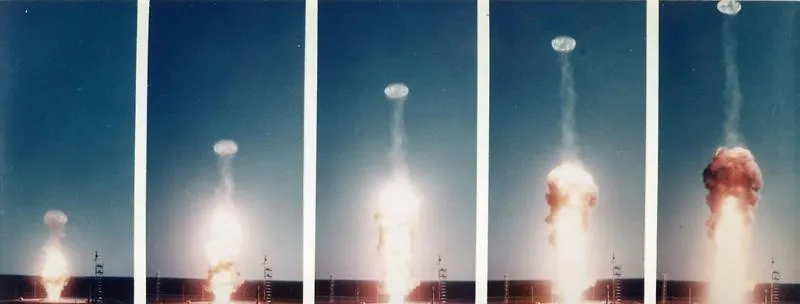
The latest generation, Minuteman III, delivers a smaller explosive yield, but has three warheads that can each separate to reach multiple targets. Today there are 450 of these launch silos remaining.
See the gallery below for more views of the characteristic Minuteman smoke ring.
